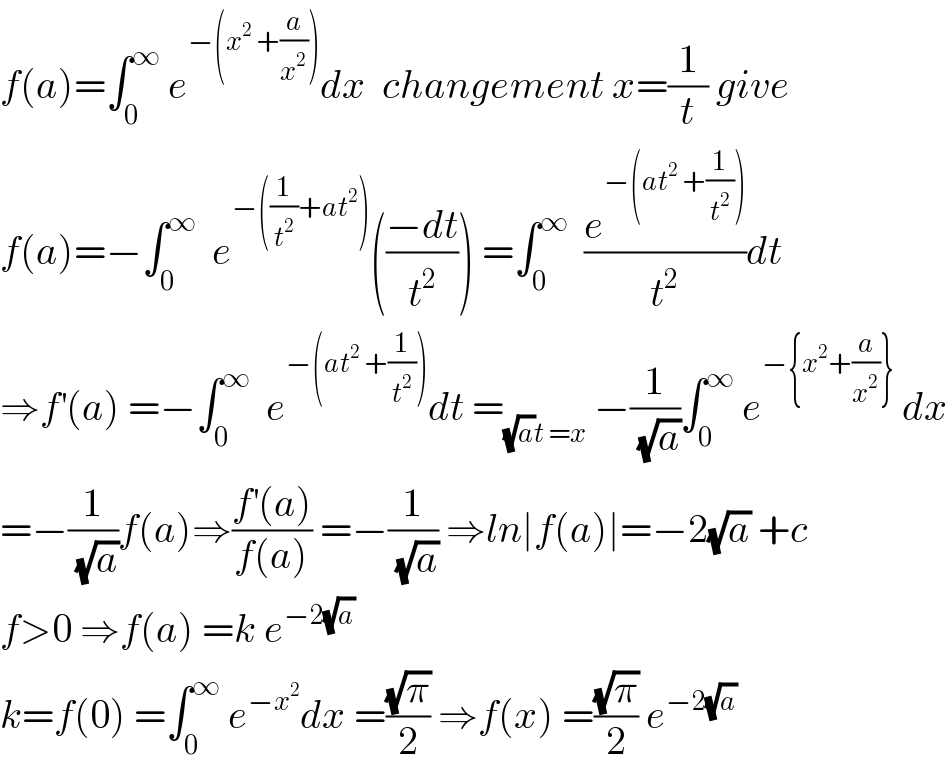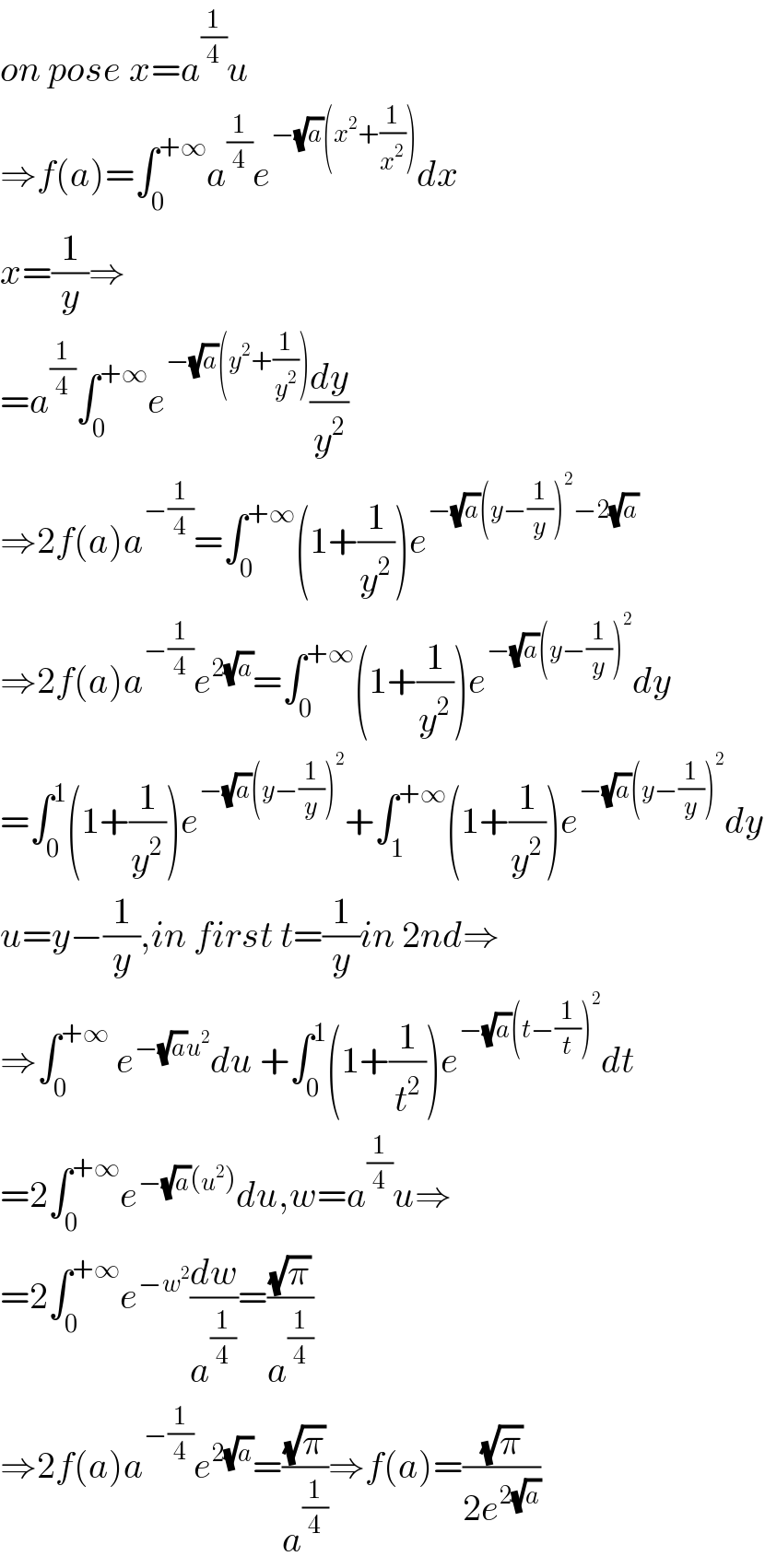
Question and Answers Forum
Previous in Relation and Functions Next in Relation and Functions
Question Number 79107 by mathmax by abdo last updated on 22/Jan/20

Commented by mathmax by abdo last updated on 23/Jan/20

Answered by ~blr237~ last updated on 22/Jan/20
![let state u=(1/x) then dx=−(du/u^2 ) f(a)=∫_0 ^∞ e^(−((1/u^2 )+au^2 )) (du/u^2 ) f∈C^(1 ) cause for all a>0 ∣e^(−(x^2 +(a/x^2 ))) ∣≤e^(−x^2 ) and ∫_(0 ) ^∞ e^(−x^2 ) dx=((√π)/2) so converges Now we can write (df/da)=−∫_0 ^∞ e^(−(au^2 +(1/u^2 ))) du =−(1/(√a))∫_0 ^∞ e^(−[(u(√a))^2 +(a/((u(√a))^2 ))]) d(u(√a)) =−(1/(√a)) ∫_(0 ) ^∞ e^(−(v^2 +(a/v^2 ))) dv with v=u(√a) So (df/da)=−(1/(√a)) f(a) Then ln∣f(a)∣=−2(√a) +c ⇒f(a)=ke^(−2(√a)) with k>0 we know that lim_(a→0) f(a)=k=((√π)/2) Finaly f(a)=((√π)/2) e^(−2(√a))](Q79119.png)
Commented by msup trace by abdo last updated on 22/Jan/20

Answered by mind is power last updated on 22/Jan/20

Commented by msup trace by abdo last updated on 22/Jan/20

Commented by mind is power last updated on 22/Jan/20

